Moss Gardens - Tips For Growing Moss In Your Garden
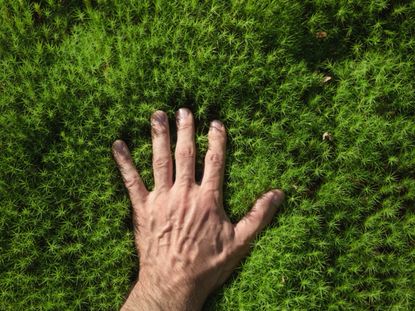

Growing moss (Bryophyta) is a lovely way to add a little something extra to a garden. Moss gardens, or even just moss plants used as accents, can help bring a sense of tranquility. Growing moss is not hard at all, but doing it successfully requires that you have a little bit of knowledge about what a moss plant is, and what causes moss to grow. Keep reading to learn more about how to grow moss.
What is a Moss Plant?
Mosses are categorized as bryophytes, which are non-vascular plants. While technically moss is a plant, it lacks the parts of a plant that we are used to seeing. It does not have true leaves, branches, or even roots.
Since moss has no roots, it must find other ways to absorb water and this is why it is frequently found in damp, shady areas. Moss also does not have seeds like many other plants do. It spreads by spore or division.
Moss tends to grow in colonies, with several plants growing closely together, which creates the nice, smooth, carpet-like appearance that makes moss gardens so beautiful.
How to Grow Moss
Knowing how to grow moss is really just a matter of knowing what causes moss to grow. Things that moss need to grow are:
Moisture - As said, moss needs a damp location to grow, but will not do as well in a location that is swampy.
Shade - Moss also likes to grow in the shade, which makes sense as moisture is more likely to linger in these areas and the moss will be less likely to dry out quickly.
Gardening tips, videos, info and more delivered right to your inbox!
Sign up for the Gardening Know How newsletter today and receive a free download of our most popular eBook "How to Grow Delicious Tomatoes."
Acidic soil - Moss also likes soil with a higher acidity, normally soil with a pH of about 5.5.
Compacted soil - While moss can be found growing in almost any soil type, most mosses prefer compacted soil, especially compacted clay soil.
How to Start Moss Gardens
The easiest way to start a moss garden is to simply build up the moss you already have. Many yards have some moss already growing in them (and many lawn enthusiasts consider moss to be a nuisance). If you have moss growing in your yard, then you already know that the moss will grow in that location.
Sometimes all it needs to grow thicker and more lush is a little fertilizer, a little more acid, or a little more moisture. A one to one solution of water and buttermilk will help with acid and nutrients, as will powdered milk. You can also use an acid loving plant fertilizer on the area as well.
When developing existing moss patches, it also helps to remove competing plants such as grass and weeds. If you do not have moss in your yard or if you want moss to grow in a location where it does not currently grow, you will need to transplant moss.
Moss can either be harvested (with permission and responsibly) from areas where it is already growing or it can be bought. If you harvest your moss, be aware that different moss grow in different locations. For example, a moss plant harvested from the deep woods will not grow well in an open area with light shade.
If you buy moss, the seller will be able to tell you what exact conditions that moss is suited for. The best time to transplant moss is in spring or fall, when there will be the most rainfall.
Transplant moss by laying a patch of moss in the location you would like for it to grow. If you have a large area you would like to cover, you can use a plug method, like you would with grass. Place small pieces of moss at regular intervals over the area. The moss will eventually grow together.
After you have planted your moss, water it thoroughly. Keep the area damp with regular watering for the next year or so to help the moss establish well. If the moss is allowed to dry out, it may die. Once established, transplanted moss should only need additional water in times of drought.

Heather Rhoades founded Gardening Know How in 2007. She holds degrees from Cleveland State University and Northern Kentucky University. She is an avid gardener with a passion for community, and is a recipient of the Master Gardeners of Ohio Lifetime Achievement Award.
-
 How To Grow Garden To Table: A Guide For Home Cooks
How To Grow Garden To Table: A Guide For Home CooksWhat could be better than a meal that comes directly from garden to table? Show off your gardening and culinary skills with the very freshest food.
By Bonnie L. Grant
-
 Want a Backyard Mini Orchard? Create Your Own Container Orchard
Want a Backyard Mini Orchard? Create Your Own Container OrchardEasier to care for in small spaces, a backyard mini-orchard makes sense for busy gardeners and juicy fruit is the reward.
By Teo Spengler
-
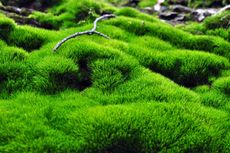 How To Kill Weeds Not Moss – Removing Weeds From Moss Gardens
How To Kill Weeds Not Moss – Removing Weeds From Moss GardensPerhaps you're contemplating turning part of your yard into a moss garden. But what about weeds? After all, removing weeds from moss by hand sounds like a lot of hard work. Luckily, controlling weeds in moss is not difficult. Learn how to kill weeds, not moss in this article.
By Laura Miller
-
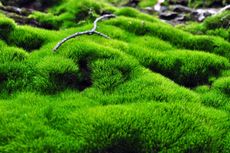 Blended Moss Information – How To Make And Establish A Moss Slurry
Blended Moss Information – How To Make And Establish A Moss SlurryAlso known as “blended moss,” moss slurry is the easiest and quickest way to get moss to grow in difficult locations of the garden. With a lot of slurry, you can even create a moss lawn. It isn’t difficult to establish a moss slurry, so click here to learn how.
By Mary H. Dyer
-
 Is Yogurt Good For Moss – How To Grow Moss With Yogurt
Is Yogurt Good For Moss – How To Grow Moss With YogurtWhile several techniques for growing moss have been debunked as false, many still try their hand at it. One technique uses yogurt as a catalyst for encouraging the spread of moss. But does moss grow on yogurt and is this just another falsehood? Learn more here.
By Tonya Barnett
-
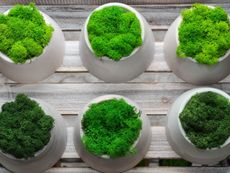 Container Grown Moss – How To Grow Moss In A Pot
Container Grown Moss – How To Grow Moss In A PotMosses are fascinating little plants that form luxurious, bright green carpets, usually in shady, damp, woodland environments. If you can replicate this natural environment, you won't have any trouble growing moss in plant pots. Click here to learn more.
By Mary H. Dyer
-
 Garden Moss Types: Varieties Of Moss For Gardens
Garden Moss Types: Varieties Of Moss For GardensMoss is the perfect choice for that spot where nothing else will grow. Thriving on just a little bit of moisture and shade, and happy with no soil at all. Click here for more information about different types of moss for your garden.
By Liz Baessler
-
 Keeping Moss Indoors: Care For Growing Moss Indoors
Keeping Moss Indoors: Care For Growing Moss IndoorsIf you've ever seen trees covered in moss, you may have wondered can you grow moss indoors. Growing moss indoors is easy with the info from this article.
By Anne Baley
-
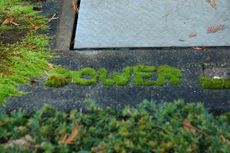 What Is Moss Graffiti: How To Make Moss Graffiti
What Is Moss Graffiti: How To Make Moss GraffitiEver seen artwork growing in moss on a wall or building? This is the latest in ecological guerrilla gardening - moss graffiti art. Learn more about this unusual art form in the following article.
By Anne Baley
-
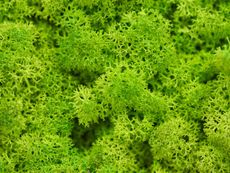 Moss Propagation: Learn About Transplanting And Propagating Moss
Moss Propagation: Learn About Transplanting And Propagating MossMosses thrive in areas where other plants struggle. Moss doesn't actually have a root system or seeds like most garden plants do, so propagating moss is achieved using info from this article.
By Anne Baley